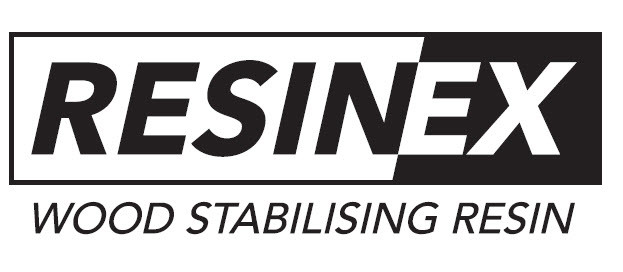RESINEX: Wood Stabilising Resin
RESINEX: Wood Stabilising Resin
Resinex is a heat-cured resin giving professional-level results with a home stabilising setup. Using a straight-forward process, the resin penetrates deeply and sets solidly using heat.
- Easy to use
- Deep penetration in wood and antler
- Solid curing - cures at 90 C
- Can be dyed with solvent-based dyes
- Non flammable
- Low odour
- Easy clean-up using normal household products
- Achieve professional results at home
The advantages of stabilising are well-known to knife makers and woodworkers wanting a more solid material than raw wood. Most woods do not require stabilising but most will benefit from it;
- Moisture has little or no effect on stabilised wood
- Structural integrity - it is stronger
- Ease of working - saws, drills and grinds like wood but with less tear-out
- Heavy, solid feel to the material
- Much, much longer life time of a handle in use
Resinex comes as a kit consisting of the Wood Stabilising Resin and the Activator in a separate bottle.
Instructions:
- Dry the wood for 24 hours at low heat, let cool in zip lock bag or closed container.
- Activate the resin by adding te Activator to the Resin and add the cap back on.
- Shake the resin, let sit for 30 mins and shake again
- Add Resin to the vacuum chamber
- Add dry, cool pieces of wood to resin and weight down so wood is fully submerged
- Add vacuum slowly and monitor until the initial foam settles before applying full vacuum
- Leave under vacuum until there are no more bubbles* this can be misleading and some times bubbles will continue for a long time. Should your equipment have problems with holding vacuum, experiment with how many days your setup requires by doing small test batches, weighting blocks to create "before" and "after" weights.
- Remove vacuum and the blocks will absorb the resin. European and US woods are to soak for at least twice as long as the vacuum time. Some Australian woods are known to be very hard to stabilise due to locked grain structure and might require weeks or even months to soak up the resin.
- Remove the blocks, wipe off any excess resin and wrap each block separately in aluminium foil. Wrapping more than one block together will make them fuse into one solid lump later.
- Place wrapped blocks in a heat source that can heat the blocks slowly and evenly to 90 C. For instance a toaster oven or stove. Leave the blocks in for 2-4 hours to solidly set.
- To check the status of the blocks, remove the foil quickly from one block. If the block is wet with resin still, wrap it back up and leave it for another hour before checking again.
Finishing the blocks:
Remove the foil as the blocks come out of the stove, and let them cool. Scrape or sand off any excess resin left on the blocks. Sanding to 240 grit is a great way to show off the final product. It is not a bad idea to record your results for comparing against other batches later. Weight and number some blocks in every batch, creating a "before" and "after" data set you can review across batches and types of materials.
Clean-up:
Clean up the chamber and any equipment using water and normal dish-washing detergent. Dry and let air-dry to completely dry before storing away.
Storage of resin:
- Resinex needs to be stored in a cool location, out of direct sunlight.
- Air condition or even the fridge is best, to maximise shelf life of the resin and activator.
- Activated resin can be stored and re-used, again storing it cold will extend the shelf-life.
- If the resin has not set, it can be re-used.
- Store the resin in plastic bottles in a cool place.
Safety:
- There are potentially dangerous chemicals involved and care should be taken that Resinex resin and Activator is stored away from children, animals and at a constant, cool to room temperature.
- Do not handle the activator more than required, simply tip the small bottle into the large and mix well.
- The product may cause eye and skin irritation as well as respiratory tract irritation
- Resinex may cause allergic skin reaction and might be harmful if swallowed
Recent Posts
-
Why Bed The Tang In Epoxy - Then Knock it OFF Again.
What is "Bedding the tang"? Bedding the tang means gluing a stick-tang blade into the handle block i …21st Mar 2025 -
Marble Leather - How to Dip Dye Veg Tanned Leather
This was my first experiment with hydrodipping or dip dying leather, and it came out pretty cool! I …14th Mar 2025 -
Make Burl Wood POP!
Staining wood with leather dye. or "How to make burl wood really pop". This technique really only wo …8th Mar 2025




